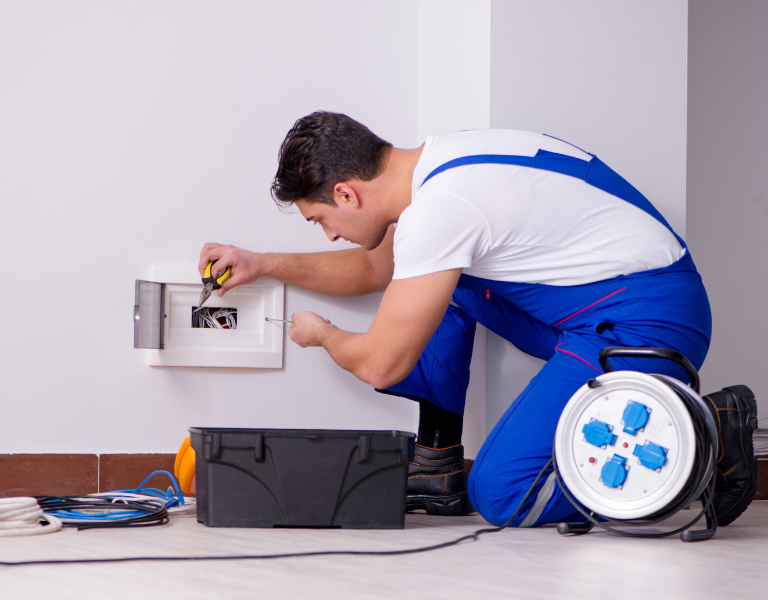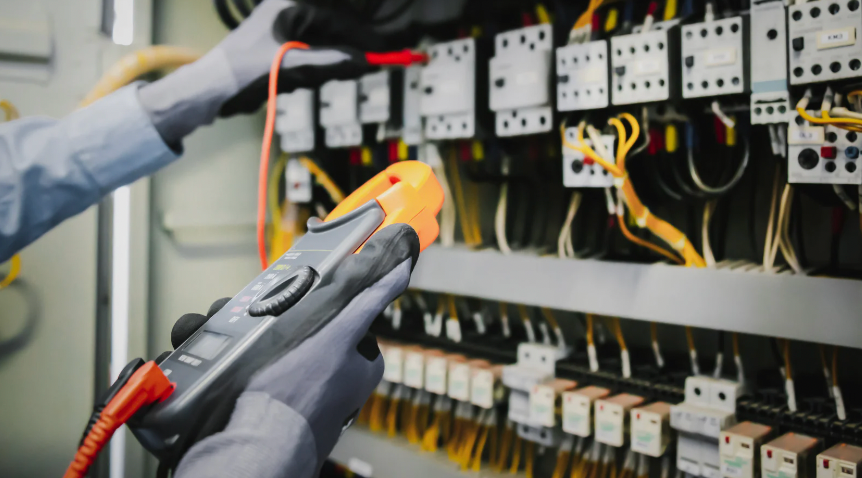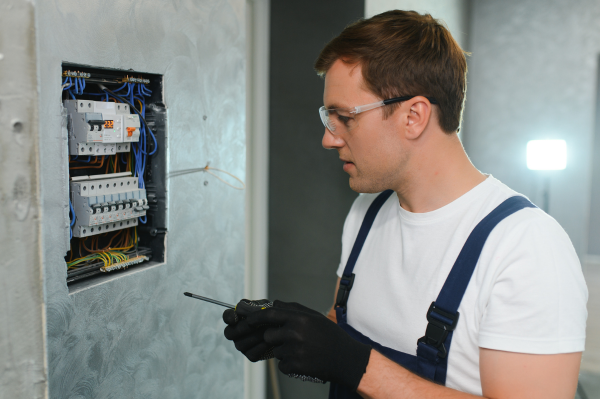How Often Should You Test Your Appliances?
Introduction
Have you ever wondered how safe your appliances are? Regular appliance testing, whether a fax machine in the office or a power tool on a construction site, is essential. Testing your appliances prevents electrical hazards and ensures compliance with safety standards. Let’s explore why and how often you should
test your appliances to maintain a safe environment.

What Does Testing Appliances Mean?
Testing appliances involves thoroughly pat tests electrical equipment to ensure safety. It includes checking for faulty wiring, damaged cables, and other potential risks. This process is crucial for maintaining safety standards and protecting people from electric shocks or fires caused by faulty appliances. PAT stands for Portable Appliance Testing. Currently, there are no specific legal requirements to inform people how often PAT testing should be done. Critical Factors Affecting How Often PAT Testing is Done As there are no legal requirements on PAT testing frequency, we have put together some essential factors.
Regular testing ensures appliances are safe, but if you’re experiencing issues with your Hive thermostat, a simple reset might be all you need.
Why Is It Important to Test Your Appliances?
Prevention of Electrical Hazards
Faulty appliances commonly cause electric shocks, fires, and other electrical hazards. Regular inspections and testing help identify issues before they become dangerous. Class 3—Low-voltage items are the safest electrical appliances.
Ensuring Compliance with Legal Requirements
In many regions, businesses are legally responsible for ensuring the safety of their electrical appliances. Neglecting this can result in fines or accidents that harm employees or customers.
How Often Should You Test Your Appliances?
There’s no one-size-fits-all answer to this question. The frequency depends on the type of appliance, its usage, and the environment it’s used in.
High-Risk Environments
Frequent PAT test appliances are necessary in high-risk environments like construction sites or industrial settings. Power tools and portable electrical appliances equipment are exposed to harsh conditions, making them prone to damage.
Low-Risk Environments
Annual testing is generally sufficient for office equipment like desktop computers and fax machines. These appliances operate in controlled conditions and are less likely to develop faults.
Special Cases
- New Equipment: While new appliances may seem safe, they should still be visually inspected for manufacturing defects.
- Portable and Handheld Equipment: These require more frequent testing due to their extensive use and higher risk of damage.
Understanding PAT Testing
What is PAT Testing?
Portable Appliance Testing (PAT) combines visual inspections with electrical testing to ensure that portable electrical equipment appliances meet safety standards.
PAT Testing Requirements
Employers must perform risk assessments to determine the PAT testing frequency. Factors like appliance type and working environment influence how often testing should occur.
Common Appliances That Require Testing
Certain appliances need more attention than others. Examples include:
- Kitchen appliances like kettles and toasters
- Office equipment such as printers and extension leads
- Power tools and other industrial appliances
Who Can Conduct Appliance Testing?
A competent person with proper training can carry out PAT testing. This can be an electrician or someone explicitly trained for the task. A qualified PAT tester ensures accuracy and compliance with safety standards.
How to Conduct a PAT Test
Visual Inspections
Begin with a formal visual inspection. Look for:
- Damaged cables or plugs
- Signs of overheating
- Faulty earth connections
Electrical Safety Testing
Using a PAT tester, check for:
- Proper insulation
- Functionality of the appliance
- Accurate test results
Legal Responsibilities and Compliance
Employers have a legal obligation to ensure their appliances are safe. Depending on the country or region, regular PAT testing is required by law. Neglecting this responsibility can lead to severe consequences, including fines or workplace accidents.
Maintaining Safety Standards
Regular PAT testing is critical to maintaining workplace safety. Always document your test results and ensure follow-up tests are conducted at appropriate intervals.
Conclusion
Testing your appliances is more than a formality—it’s a commitment to safety. By understanding the importance of regular testing and ensuring compliance with safety standards, you can prevent accidents and create a safer environment for everyone. Amidst the hectic running of a business, you may ask, ‘How often should PAT testing be done?' as the recommendations for differing industries mean guidelines can vary.
FAQs About Appliance Testing
How often should appliances in low-risk environments be tested?
Appliances in low-risk environments, like office equipment, typically require annual testing.
What is PAT testing, and why is it important?
PAT testing ensures portable electrical equipment appliances are safe, preventing hazards and ensuring compliance with regulations.
Who can perform PAT testing?
A competent and qualified person, often a trained electrician, can conduct PAT testing.
Do new appliances need testing?
New appliances should be visually inspected for manufacturing defects, even if electrical testing isn’t immediately required.
What happens if appliances aren’t tested?
Neglecting testing can lead to accidents, fines, and non-compliance with legal requirements.
Do new appliances need testing?
New appliances should be visually inspected for manufacturing defects, even if electrical testing isn’t immediately required.
What happens if appliances aren’t tested?
Neglecting testing can lead to accidents, fines, and non-compliance with legal requirements.
Phone:
07494 124758
Address::
21 Roehampton Lane Putney SW15 5LS
Email:
JRO-Electrics@outlook.com
Services Areas
Earlsfield | Streatham | Balham | Ealing | Richmond | Twickenham Hammersmith | Kingston Upon Thames
Further Useful Reading
The Real Cost of Landlord Electrical Safety Certificates: A Breakdown
Why Your Home Needs a BS7671 Electrical Safety Certificate















